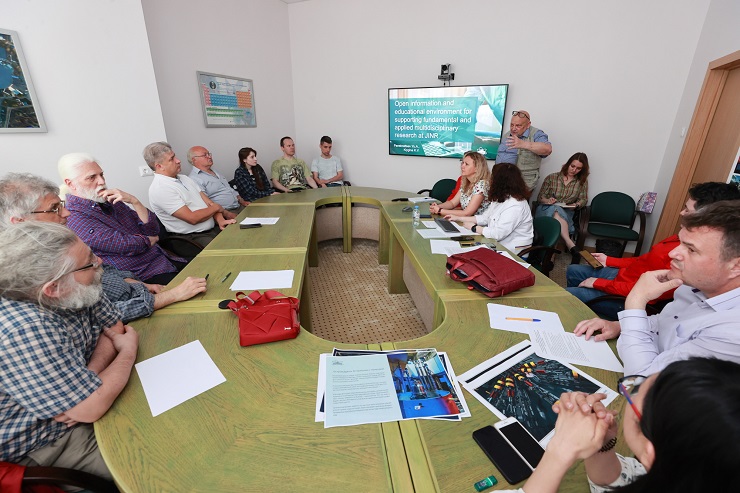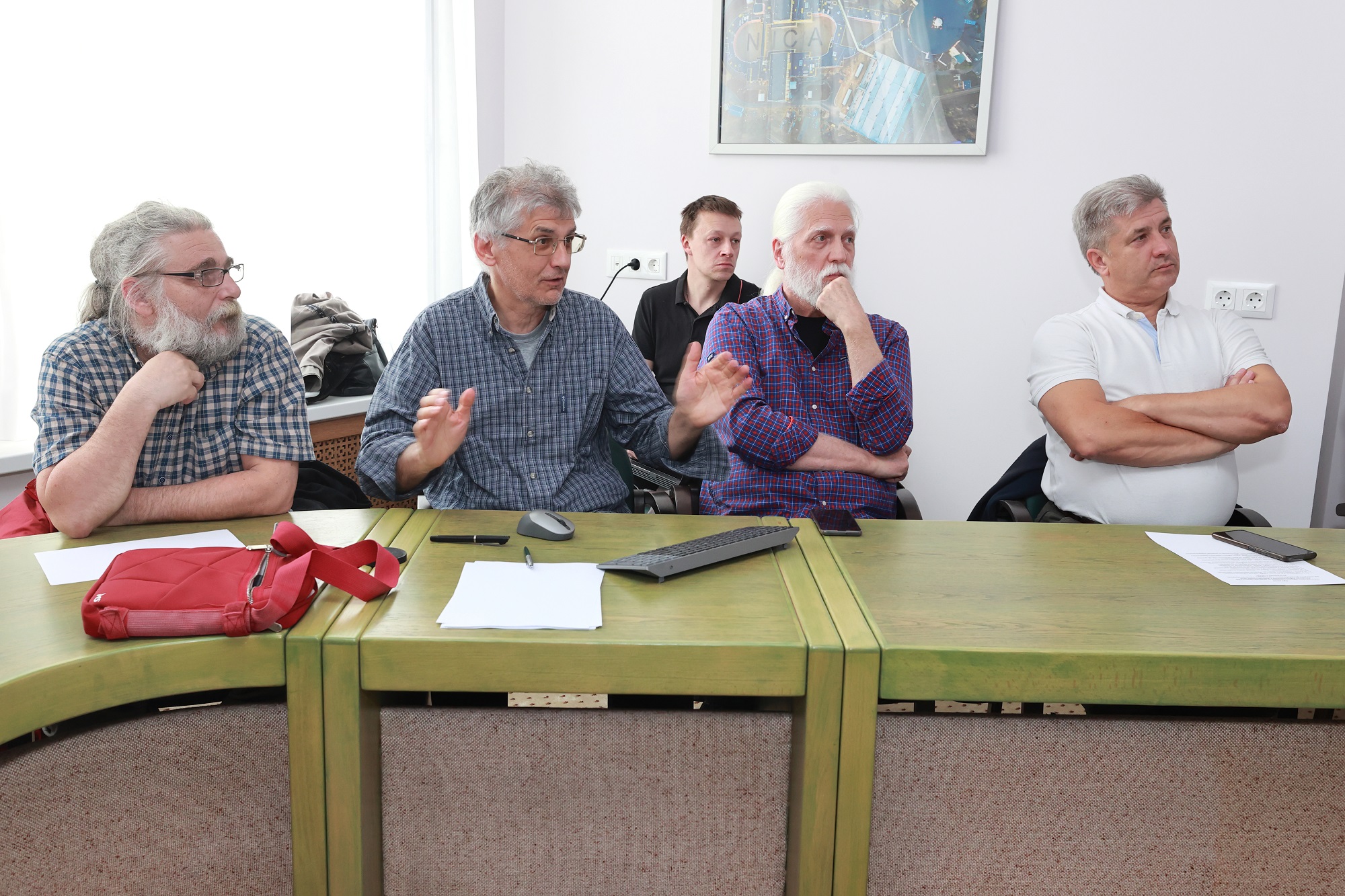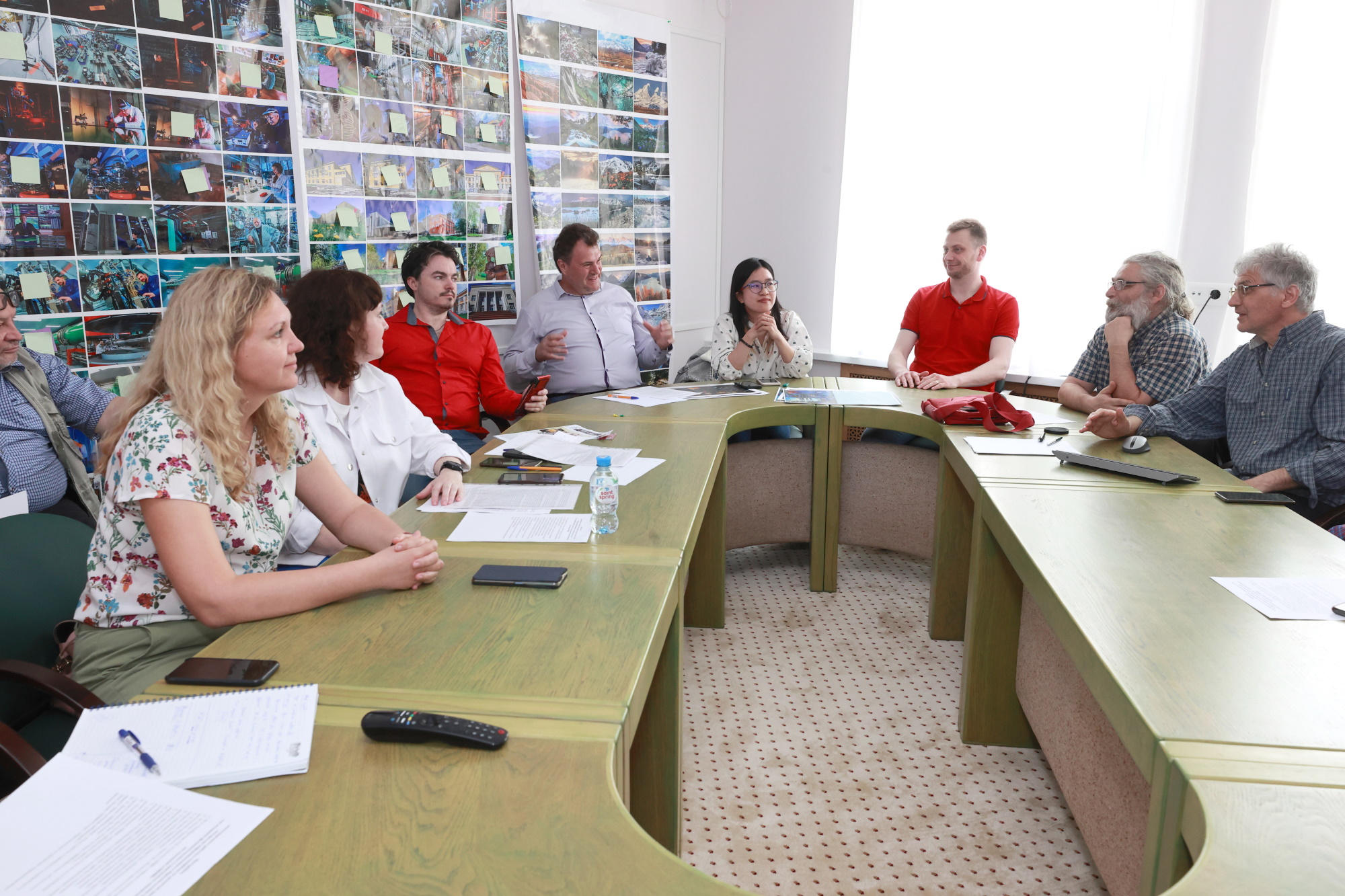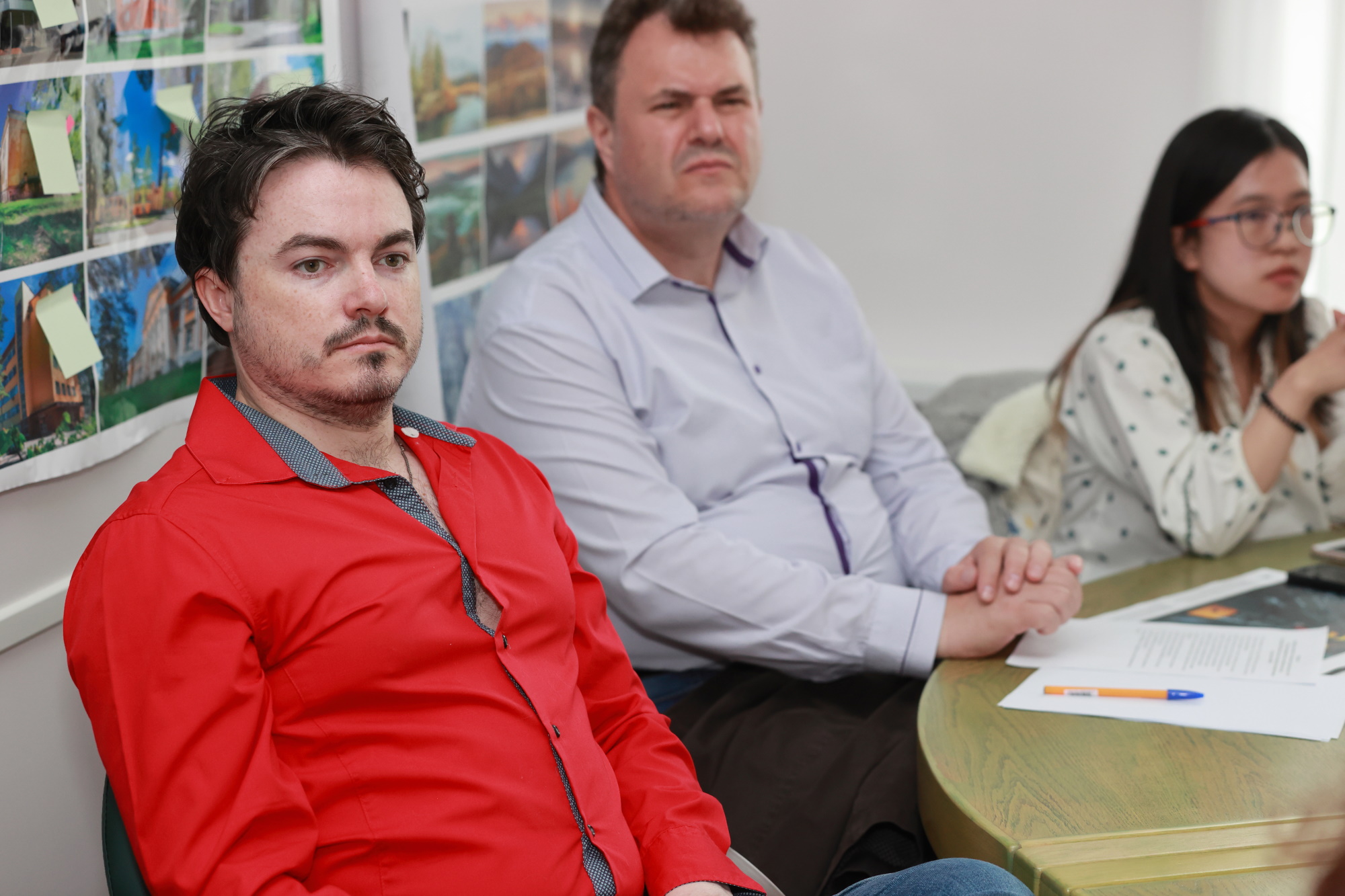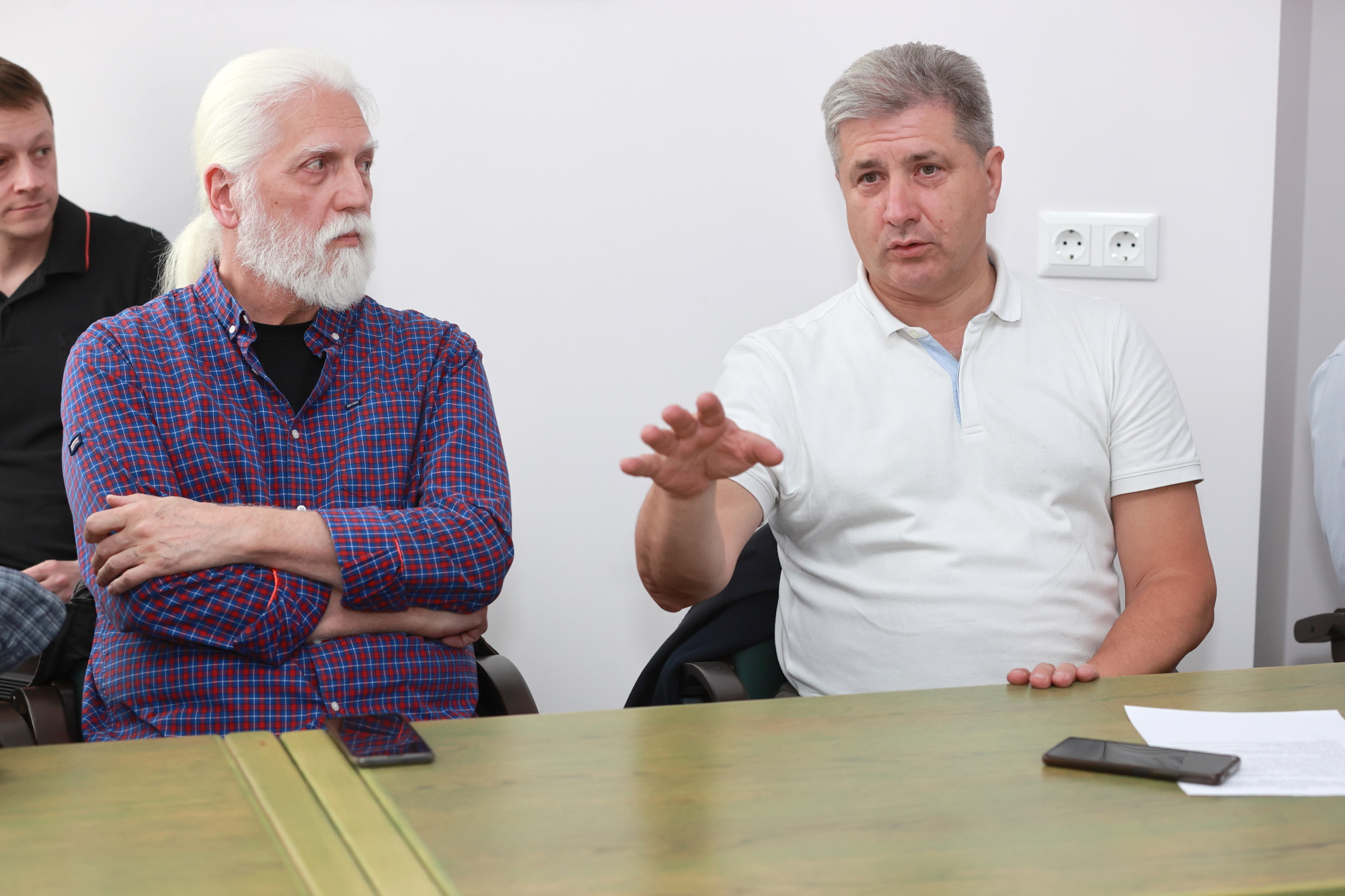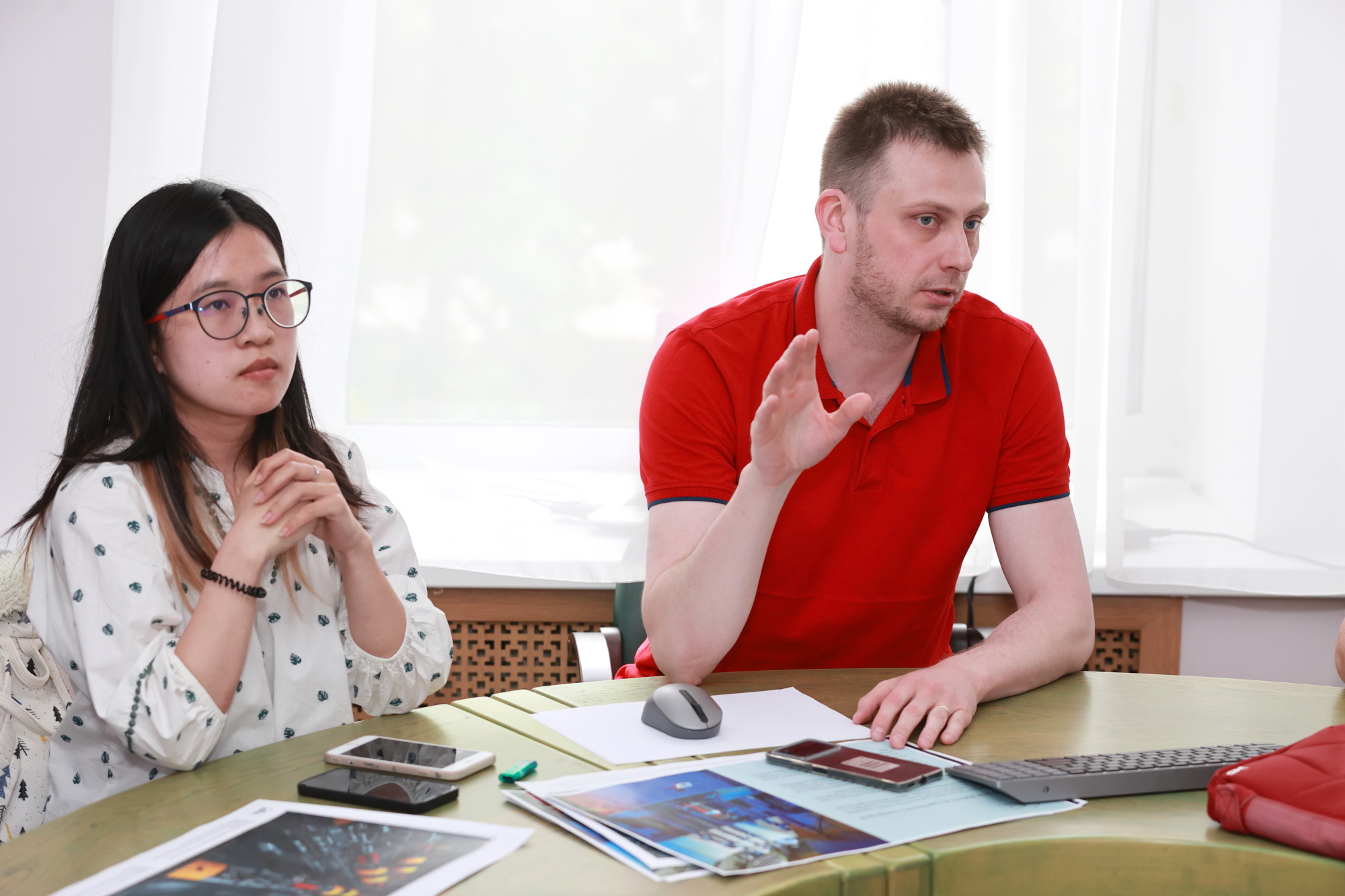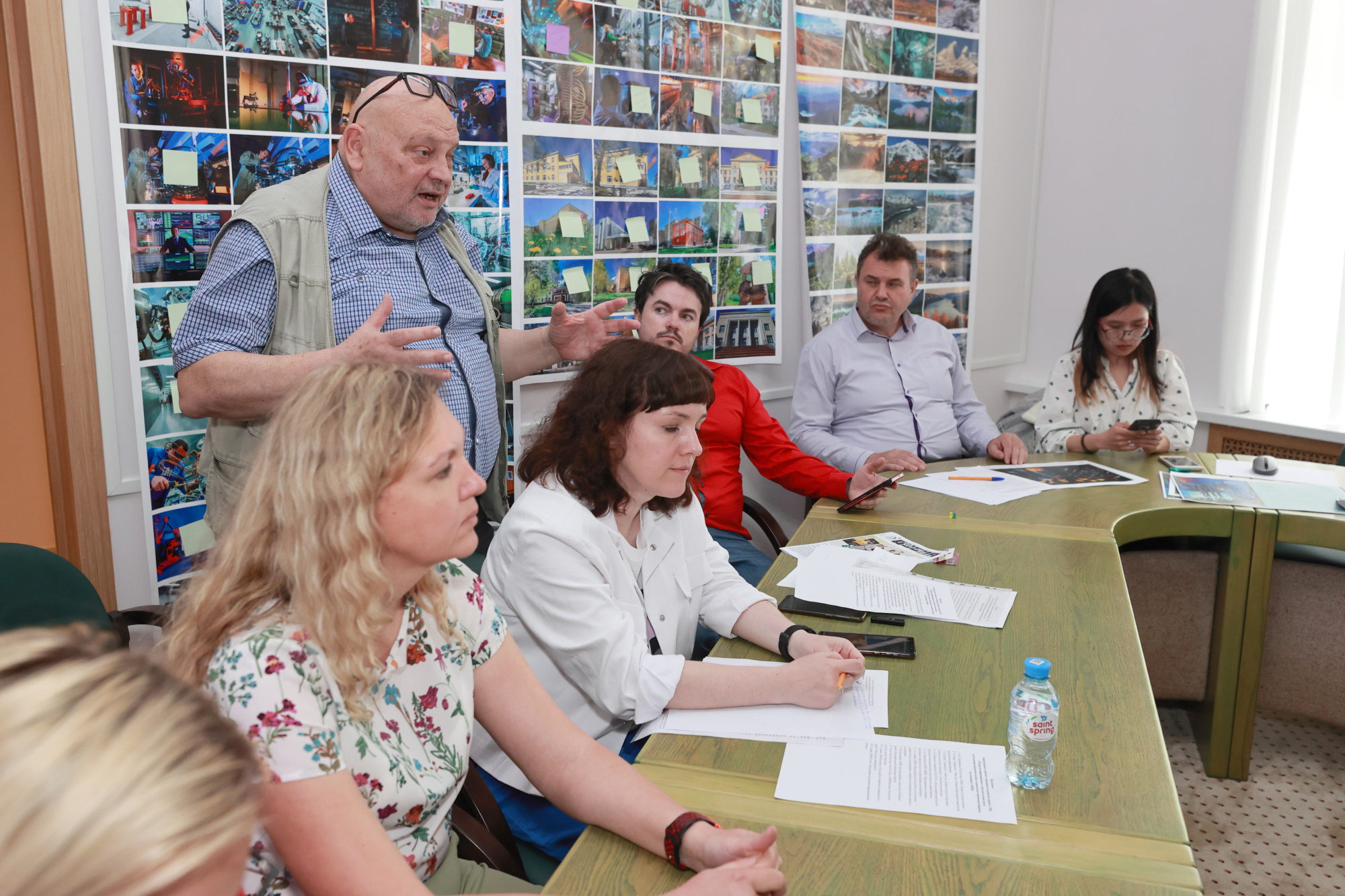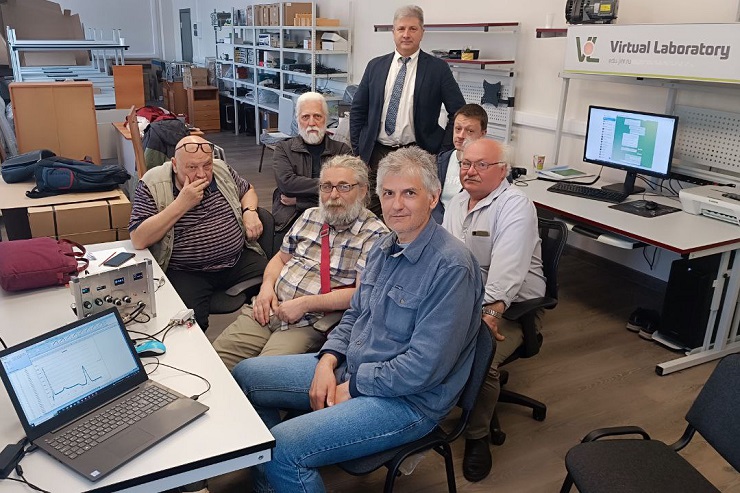Meeting on development of information and educational environment: entering new stage
News, 30 May 2023
On 18 May, an international working meeting on the development of the JINR University Centre project “Open information and educational environment to support fundamental and applied interdisciplinary research at JINR” took place. Representatives of universities of the JINR Member States and Associate Members took part in the event. The participants of the meeting discussed new approaches using information and communication technologies in teaching students and schoolchildren. In addition, new ideas and proposals on the creation of virtual workshops were considered.
As Head of the Department of Development of UC Educational Programmes Yuri Panebrattsev said, the first stage of the project is being completed. As part of this project, a lot has been done. For example, training courses for students on the JINR research areas have been developed and information systems have been created to support fundamental research in laboratories. In addition, multimedia exhibitions, including the travelling ones, are being held. This allows sharing experiences with the Member and Partner States universities. Indeed, the round table attracted the attention of representatives of Bulgaria, Egypt, RSA, Russia, Serbia, and Vietnam. They made presentations with comments.
The major project of the Institute “Virtual Laboratory” is successfully developing. It is an educational platform, which complements the existing software complexes. The “Virtual Laboratory” has become an effective addition to traditional training courses. It introduces students and young scientists to real experimental equipment and the processing of real experimental data. As the participants of the meeting noted, this approach allows students not only to acquire basic theoretical knowledge and certain practical skills during laboratory work, but also to simulate a virtual experimental facility and set a research task.
The topic of developing the capabilities of the “Virtual Laboratory” became central during the discussion. A group of Serbian developers, who have united around a long-standing collaboration with the University of Novi Sad, shared their experiences, insights, and new approaches. The round table was an important element of the Serbian group’s one-week working visit. In addition to the merely virtual approach, the group is developing a realistic simulation of a nuclear physics experiment “in hardware”. This was the topic of one of the presentations, as well as the topic of a practical demonstration for interested participants of the meeting.
Representatives of the Russian National Research Nuclear University MEPhI and the Laboratory of High Energy Physics JINR brought forward proposals concerning the creation of a virtual workshop based on collider research.
Vietnamese participants shared their positive experience of adapting the “Virtual Laboratory” to the national language environment.
The issue of firmware compatibility of ongoing developments for their joint use was one of the problems discussed at the meeting. The topic of developing a systematic description of standard educational and qualification tasks that can be tackled on the basis of the “Virtual Laboratory” remains relevant. As the meeting participants admit, much remains to be done.
Professor Miodrag Krmar from Novi Sad University commented on the great interest of universities in the developments discussed. “The big problem of university education in Serbia in the field of nuclear physics, and not only in Serbia, lies in the lack of research facilities at universities”, he said. “Organizing full-fledged workshops based on real detectors and electronics is sometimes an impossible task. That is why we are trying to recreate the laboratory of the Faculty of Sciences, where I have the honour to work, as realistically as possible in the form of virtual reality, so that it can be shared with everyone who is interested in it”.
The report by professor Ilija Arsenić from Serbia examined the possibility of using microcontrollers to create laboratory works for the study of experimental nuclear physics.
Bulgarian colleague Hristo Dimov shared his experience of using virtual laboratory works at the Faculty of Physics of Sofia University created as part of the project. He supported the development of a workshop on experimental nuclear physics at colliders.
A representative of Egypt Elena Badawy made proposals for the use of the project results in the JINR Information Centres.
Head of the RSA scientists group at JINR Arnoux Rossouw developed the theme, “Virtual laboratories are a valuable resource for South African universities, including historically low–income universities, to access advanced experiments. Such laboratories increase the level of flexibility and inclusivity, facilitate the learning process, and foster cooperation with other organizations. Students from universities with little funding have the opportunity to interact with researchers and peers from other institutions. This ensures the exchange of knowledge, ideas, and joint projects. Thus, students feel part of a like-minded community, and opportunities for research and academic development are enhanced. The JINR Information Centres can be involved in the dissemination of information about the virtual laboratories. Perhaps this is to become one of their functions, because virtual laboratories are a whole set of programs. I hope that the Information Centre in South Africa will soon join the JINR IC network”.
As the newly appointed Director of the University Centre Dmitry Kamanin explained, such a task exists. “For example, a few days ago, the “Virtual Laboratory” started working at the JINR Information Centre in another international organization, the headquarters of the Arab Atomic Energy Agency (AAEA) located in Tunisia”, he said. “It is planned that this Information Centre will be one of the most important tools for the development of cooperation between JINR and the countries of the Middle East and North Africa Region in matters of knowledge transfer, personnel training, and scientific cooperation. Our AAEA partners have shown great interest in using the “Virtual Laboratory” in their educational programmes, and we are now beginning to make joint plans to develop a partner network in the region on this basis”.
The work with schoolchildren and school teachers becomes important in the issue of personnel training. The participants of the meeting also paid great attention to this topic. A new set of textbooks for in-depth study of physics in grades 7-9 was presented. In order to interest future professionals, the textbook includes interesting facts about the life of scientists, the history of inventions, a description of the principles of various devices and at-home experiments. In addition, there are also cases, by solving which the students get examples of how to apply the acquired knowledge in real life. But the main thing here is to create interactive 3D models of physical processes and technical devices in digital format, research laboratory works based on real experiments, the use of virtual and augmented reality technologies to introduce schoolchildren to the achievements of modern science.
“Currently, we are entering a new stage of the project on the creation of an open information and educational environment,” Yuri Panebrattsev highlighted. “The project has been prepared for discussion at the JINR Science and Technology Council meeting. We need to move forward. I would like to say that “Virtual Laboratory” is the brand of the project. In fact, we are talking not only about virtual workshops, but also about the development of a laboratory workshop on the basics of experimental nuclear physics at the UC to conduct student schools and practices. In order to make such workshops available to many universities, it is planned to develop a platform to connect the remote experiments of various universities, including foreign ones. Each university has its own original experimental set ups, all of which are different. By working together, we can greatly expand the range of nuclear physics research available to us. Considerable attention is to be paid to the support of applied research. We want to create a workshop on radiobiology based on experimental facilities of the Laboratory of Radiation Biology and support it with a training course prepared by leading LRB specialists”.
The proposals for the development of the project were interesting and constructive, and the communication was effective. We wish the project participants successful work.
